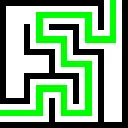Permanently Deleted
Permanently Deleted
Primary time scale failure at NIST Boulder campus; significant impact on NTP services
Primary time scale failure at NIST Boulder campus; significant impact on NTP services
Primary time scale failure at NIST Boulder campus; significant impact on NTP services
Foundations of Amateur Radio - Building a shack: Part 2 - How much space do you need? #podcast
Australia’s Social Media Ban Was Pushed By Ad Agency Focused On Gambling Ads It Didn’t Want Banned
Australia’s Social Media Ban Was Pushed By Ad Agency Focused On Gambling Ads It Didn’t Want Banned
Foundations of Amateur Radio - Building a shack: Part 1 - Setting the Scene #podcast
VK regulator: New equipment safety pledge to protect Australians from dodgy devices
Foundations of Amateur Radio - Bald Yak 14, choices and software flexibility #podcast
Foundations of Amateur Radio - I have a problem .. with logging. #podcast
Foundations of Amateur Radio - How to make our hobby and community resilient? #podcast
Foundations of Amateur Radio - A new year with new services to the public .. in 1905 #podcast
How do you pronounce in words the following two references to money: "6½d" and "6s. 6d." from a 1904 text?






You clearly didn't watch the MythBusters episode dedicated to this topic considering all its various lighting technologies.
The takeaway: Turn off the lights when you leave the room, unless you're going to be back within a fraction of a second.
https://m.youtube.com/watch?v=fRWEE1wiUfU